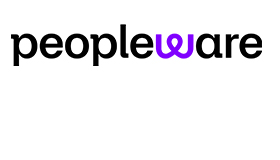Charles Watson writing for injixo explores how the best contact centres approach real time management.
A contact centre can have the best planning in the world, but without solid real time management, it can be doomed to fail once things start to vary from the plan.
It may be something as simple as a spike in call volume that causes a queue that takes hours to work through or a few extra agents calling out sick and you don’t have the resources to meet the demand.
Often, it can be the aggregate of a few things that are hard to pinpoint that throws off performance. A few agents take their breaks a little late and your volume comes in heavy in the interval and you build a queue.
Recovering service level is expensive and not a great customer experience. Mathematically, the only way to bring your service level up to 80% (if that’s your goal) from 65% is to perform at higher than 80% the rest of the day. This not only adds extra costs, but provides for a very uneven customer experience.
Building out the right real time management requires an intentional approach to how you leverage your people, build out and execute your processes, and use the right technology to support your efforts and report on the results.
In this blog, we’ll explore those three aspects of a world-class real-time management strategy and talk about how to leverage them to make a real difference for your company.
Real Time Management Team: the Eyes on the Queues
Let’s start by talking about our People. I’ve led workforce management teams of all sizes, and hands down the best approach to staffing real time is a dedicated team of analysts who focus 100% on real time.
Not only does focus really help, but full-time, dedicated analysts can spot anomalies more quickly than people who do this part time.
They become intimately familiar with the trends and know how to react. They also become a great resource for helping you to understand how the actual performance intraday matches up with the plan.
When you can’t have dedicated staff, then the next best option is to share the responsibilities between workforce management and the operations team.
An example of this would be to have a few workforce management analysts watch the queues part of the day, and schedule a few top performing agents (or team leaders) to rotate monitoring and actioning the queues.
The benefit of blending responsibility is that it helps to build the relationship between workforce management and operations, and the shared exchange of knowledge helps to build a more robust real time management set of actions.
The workforce management team understands the math and the mechanics of queue management. The operations leaders understand the nuances of shifting schedules and taking actions intraday.
They may have recommendations on better ways to gain capacity intraday, or share what actions may not be as beneficial as you expect.
Here’s an example: Canceling a one-on-one may simply mean that an agent logs back into their system, which is quick.
Canceling a training already in progress may mean they need to physically move from the training room back to their desk. In a virtual environment, it may mean that they have to save progress and log back into their production system.
It can take time. Seconds matter when you are trying to prevent a queue from becoming more severe.
Real Time Processes for Results
Effective real time management processes begin with understanding your service level objectives and flexibility options.
Some contact centres are very rigid with how agents can be utilized real time, and others require agents to be very flexible to ensure they are always there when the customers need them.
Having a “playbook” is critical to success. The playbook needs to have alignment between the workforce management and the operations team in advance.
An example of a best-in-class playbook is a list of conditions and actions to take when those conditions are hit.
It has clear roles and responsibilities so everyone can act quickly. Bonus points if you can get it to fit on one page! By doing that, it’s easy for team leaders, workforce management and others to keep it at their desk as a quick reference.
The conditions you’ll want to use will depend on what your objectives are. The most common thresholds to use are service level (% of calls answered within a threshold), ASA (average speed of answer) or abandon rate. You can set your actions to get more aggressive based on the conditions. Below is a sample grid for reference.
| Condition | Action | Owner |
|---|---|---|
| Service level at goal | Monitor queues | Real-time Management Team |
| Service level 5-15% below goal | Cancel non-critical meetings | Team Leaders |
| Service level >15% below goal | Cancel all offline activities | Team Leaders |
As you build this out, a few things to keep in mind. First, there may be a temptation to make this complicated and set different thresholds for different time periods (e.g. last 30 minutes or last hour vs. full day service level).
There may be good reasons to do this, but the more complex you make it, the more likely that it gets bogged down when you go to execute.
A simple plan that can be actioned quickly is better than a complicated plan that can have delays in responding. Recovering the queues has to be done quickly.
The other thing to keep in mind is this is best done with pre-alignment with your partners in operations. They’ll need to help define what a “non-critical” meeting is, and they’ll need to support the execution. Aligning in advance reduces friction and enables quick execution.
Pro tip: The best contact centres have this playbook not just for service level recovery, but also to take actions when you’re overstaffed and service level is trending above goal.
This same playbook, expanded for both sides of service level, helps to really fine-tune staffing and costs and guide actions to take out capacity when you’re overstaffed.
This can allow you to find “pockets of availability” to support training, coaching, or other enrichment activities that can improve the performance of your operations.
The Right Technology to Bring It All Together
Once you have your people and processes in place, you need to make sure you have the right technology to support your efforts!
You may already have a workforce management system, may be looking for one, or may be happy with spreadsheets (or have no choice but to use spreadsheets). Let’s walk through some key functions a workforce management tool can help you with.
Most technology on the market will do the basics. This includes real time reporting that shows how the queues are performing, schedule adherence, and various other views to keep your finger on the pulse of what’s going on in your contact centre.
It’s important to have intraday reporting and views that are simple to view, easy to identify gaps in performance, and ideally set thresholds (red or yellow) to alert you that there is an issue.
Some of the functions you want to look for to enhance the execution of your playbook are meeting and break optimizers.
These are tools that are embedded in the workforce management system that allows you to put in parameters for scheduling offline activities (e.g. meetings, trainings, or breaks) and have it align those based on the expected intraday arrival pattern of workload. This can be done weekly, daily or even within the day as you re-forecast intraday.
Here are some ways you can use that function. Before the week starts, you can use an optimizer to align the intraday activities and intraday patterns.
This technically isn’t “real time” management because it’s in advance. However, you actually should think of this as the first step of real time management, because you’re adjusting staffing based on the best available information.
As you get to the day of, and within that day, you will continue to make adjustments and can continue to optimize staffing using the same tools.
Lastly on technology…there can be a lot of changes that take place, and you may need to go back and track changes that were made to schedules.
This may be for compliance/adherence reasons, or it may be to check on the effectiveness of your actions. It’s helpful if the technology has an audit trail functionality to show who made changes and when.
Real Time Is All Set Up, Now What?
Once you have your people, processes and technology all set up for real time, really think about measuring the impact of your work here.
You can use this to demonstrate to the business the benefits of effective real time and workforce management!
A few ways to do this is to measure the improvement in occupancy or service level before and after the deployment of these real time management practices.
You will achieve better service levels with less staff, and quantifying that provides a financial benefit for your company.
You can also measure the service level consistency. A metric such as the percent of intervals that achieved service level is a great way to show a more even customer experience in terms of accessibility.
This isn’t a measure that many contact centres officially manage to but it’s a great representation of how consistently you plan and execute and helps your customers have a more predictable expectation of accessibility.
It’s much better to have an 80% service level for the week with 90% of intervals achieving the goal than it is to have an 80% service level for the week with only 50% of the intervals hitting the goal.
In the second example, you may hit the average for the week, but you likely had extremes on both sides with some customers getting right through (and therefore they think they can always get right through) and some that waited a long time.
For many of these metrics, there is usually not an “industry standard” or a number that is a clear target. It’s better to focus on progress and show your improvement.
Consider taking the quarter before you make changes and establish that as the baseline. Then measure the results against that.
Show improvement and then use that to establish a forward-looking goal that you can bank on as you do your budgeting and planning. This is where you can get the real cost benefit of effective real time management, but baking it right into the budget. You’ll be a HERO!
This blog post has been re-published by kind permission of Peopleware – View the Original Article
For more information about Peopleware - visit the Peopleware Website
Call Centre Helper is not responsible for the content of these guest blog posts. The opinions expressed in this article are those of the author, and do not necessarily reflect those of Call Centre Helper.
Author: Peopleware
Published On: 6th Feb 2023 - Last modified: 7th Feb 2023
Read more about - Guest Blogs, Peopleware






 Peopleware is a leading workforce management (WFM) solution, trusted by over 500,000 users in 30+ countries. With smart forecasting, automated scheduling and real-time management, organizations can optimize workforce efficiency and keep work aligned with demand. From precise time tracking to flexible planning, Peopleware helps organizations boost operational efficiency and foster a more engaged, productive workforce.
Peopleware is a leading workforce management (WFM) solution, trusted by over 500,000 users in 30+ countries. With smart forecasting, automated scheduling and real-time management, organizations can optimize workforce efficiency and keep work aligned with demand. From precise time tracking to flexible planning, Peopleware helps organizations boost operational efficiency and foster a more engaged, productive workforce. 









